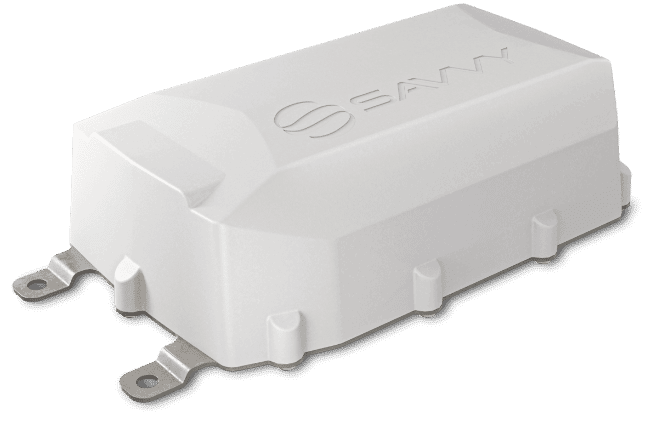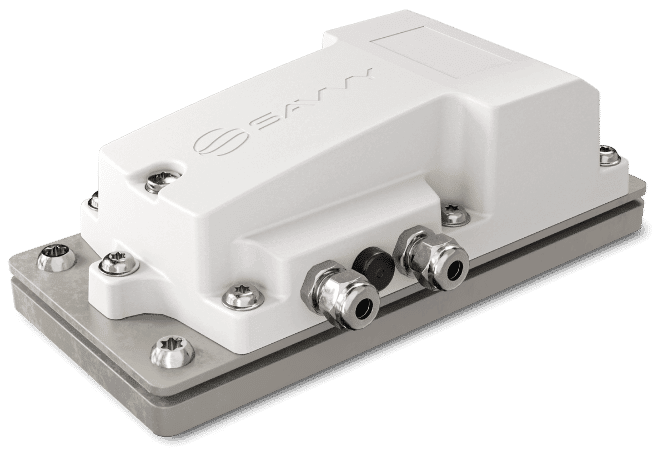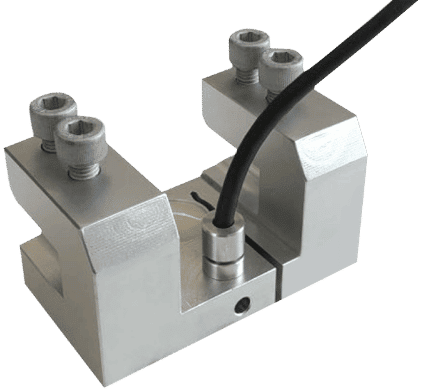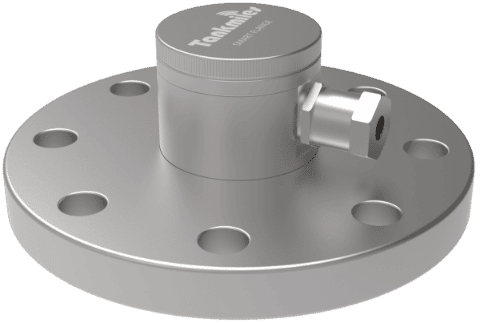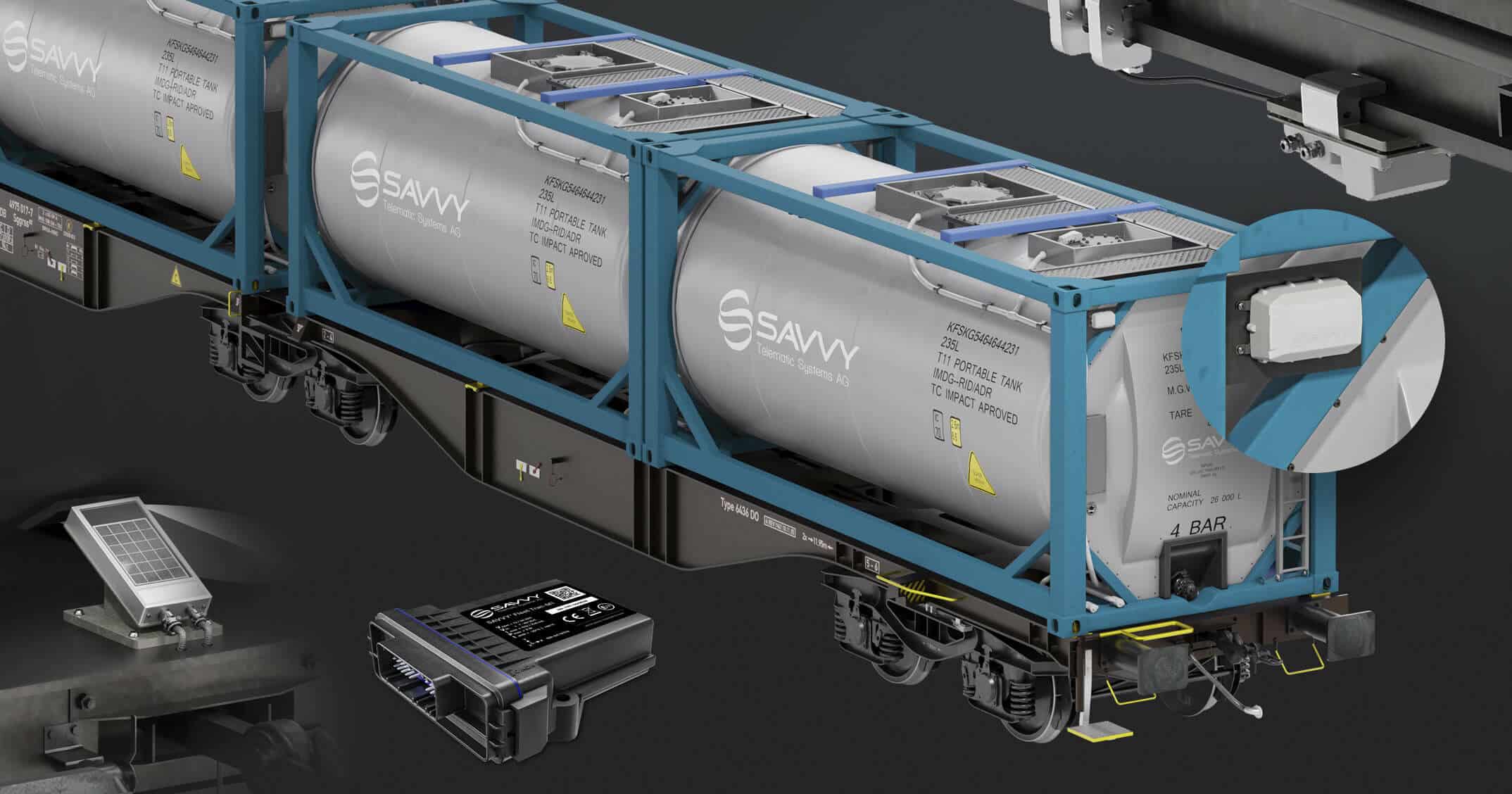
Höhere Produktivität durch integrierte Telematik und Business Intelligence.
Demands on freight wagon operations and maintenance are many and high. For operators, and to some extent for shippers, monitoring transport progress, using intermodal systems, complying with safety and maintenance regulations, and ensuring wagons are reliable and available go hand in hand with high personnel costs.
If control and implementation are insufficient, productivity may decrease, further aggravating cost pressures. The only recourse is to increase the economic efficiency of individual processes along the process chain. In view of sinking margins in rail transport and competition from the road, action is obviously required but, for the same reasons, the scope of that action is limited. Intelligent, multivendor and highly integrated telematic systems solve this dilemma.
Telematics recognises optimisation potentials
By now, it is common knowledge that unknowns cannot be optimised. To improve the efficiency of transport and related processes, all of the components of the process chain – including their current status – and the structure of the overall process have to be known in detail. Telematic solutions not only create the necessary transparency with respect to components. Acquiring, transmitting and using digital information enables the optimisation of a broad range of individual processes in rail transport while also providing insights into the way the entire transport process actually works so that it is possible to comprehensively control it.
Fields of application in rail freight traffic
The first priority is tracking & tracing. Information about transport progress or exact location in international single wagonload traffic is often not up to date or at least questionable. Telematics provides all of the relevant information accurately and in real-time. If a shipment does not meet its quota or a wagon stays at a stop too long, the freight forwarder will know immediately and can take measures, thereby reducing circulation times considerably. A complete and accurate overview of the wagons also makes it possible to re-dispatch wagons more efficiently after a shipment is completed. By recording mileage per wagon, telematic solutions support – in addition to helping comply with legal requirements – efficient fleet management. Individual wagons can be deployed and dispatched for inspection according to usage.
Using inspection plans based on actual wagon mileage and location increases wagon availability. Since wagon status not only depends on quantitative mileage but also on payloads and infrastructure quality, SAVVY® Telematic Systems offers a combination package with loading sensors and shock detectors. These record the type and intensity of vibrations that can lead to rolling stock and shipment damage. Based on this information, operators can make an exact assessment of maintenance requirements and locate damage areas more accurately – instead of having to take equipment apart – thereby avoiding longer repairs.
In subsequent steps, the acquired data can be aggregated to generate valid and comprehensive transport statistics which in turn form the basis for consistent and unambiguous reporting with visualised indicators based on actual data instead of on guesswork and interpretations.
Criteria for productive use
To use telematic solutions efficiently, however, three things are needed: modularity, integration and system autonomy:
A telematic solution does not have to solve every problem or optimise each and every process but merely the problems and processes relevant to the user. If, for example, temperature-controlled transports are not part of the core business, then sophisticated refrigerated wagon management is not necessary. It only makes sense to invest in the kind of modular systems that can be perfectly adapted and easily scaled to the company’s individual requirements.
By digitalizing business processes and the automation and/or acceleration resulting from it, telematic solutions can open up great optimisation opportunities. This requires a large number of interfaces to other business IT systems. What use is the most current positioning data if it cannot be used in the dispatch application? How can informative reports be generated if the telematic data cannot be enhanced with the ERP master data? The telematic solution can therefore only develop its full potential in combination with high-performance integration into the application landscape. To avoid any possible cost-traps caused by integration, the system has to have intelligent software and interface architecture.
The lack of a permanent power supply was one of the biggest obstacles to using telematic systems in rail freight transport. Savvy Telematic Systems’ battery technology enables more than ten years of autonomous use, in other words, a life span that extends well beyond maximum inspection intervals. Power supply autonomy has to go hand in hand with multivendor capabilities. It is only when telematics systems can interact with any type of third party technology, from means of transport to sensors to company software, that rail freight transport has all the possible optimization potentials at its disposal coupled with a high level of investment security.
From data to information to insights
The exciting thing about digitalisation is the prospect of using data in an interlinked, automated and unlimited form thereby breaking outdated business processes open so they meet 21st century requirements.
By using cloud technologies and sophisticated business intelligence applications based on cutting edge data science concepts, data is transformed into information and then business-relevant insights. Instead of engaging in tedious data bank inquiries like the kind we have seen in data warehouse models, required operational or strategic process analyses tailored to individual inquiries can be obtained in just a few clicks. Assuming, thanks to telematics, a valid data basis, predictive analytic models can be used to make business development predictions superior to those based on long-standing branch experience.
Benefit for intermodal transport – containers
These advantages can also be put to use in other fields of application. Container logistics, for example, is closely connected to rail freight transport. Optimal use in rail freight transport depends on a number of external factors. Preparing and loading goods in combined transport is one of these factors. High productivity can only be achieved if the goods are ready at the loading point and dispatched correctly.
Process optimisation through digitalisation
Via GPS and GLONASS, freight and tank containers can be actively tracked and traced in real-time. The acquired positioning data not only helps transport companies manage their processes. In a supply chain that extends from the manufacturer to the transport company to the customer, all players benefit from this data. One example: current transport and delivery status is also transparent for the customer. By obtaining more precise information about delivery dates as well as delays or breakdowns, companies can manage their production processes accordingly and adjust material flows in coordination with manufacturers and transport companies in a timely manner.
More sensory data acquisition, intelligent business logic, even better insights into container life cycles and increasing automation lead to better process and service quality. This way, bills of lading or quality proofs can be generated automatically, container loading inspections and the corresponding documentation are facilitated or, in the case of yard management, capacity use is improved and it is easier to comply with regulations that apply to storing hazardous goods in one location. A simple but cost-saving example: incoming stock is automatically acquired and validated in a stock list so a “first in – first out” principle can be applied consistently and on the spot.
CONCLUSION
Similar to the case with rail freight transport, modularity, integration and autonomy are decisive criteria. If all three conditions are met, companies can use comprehensive systems to optimise their logistics. The added value is undeniable; with state-of-the-art technologies and the support of an experienced integration services provider – like SAVVY® Telematic Systems AG – added value can be achieved within only a few months.
Press contact of SAVVY® Telematic Systems AG
 Aida Kaeser
Co-Founder & CEO
Aida Kaeser
Co-Founder & CEO




